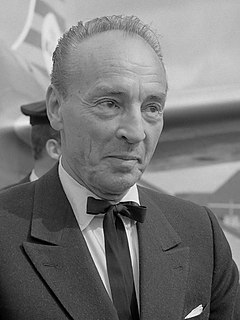
George Balanchine was an American ballet choreographer who was one of the most influential 20th-century choreographers. Styled as the father of American ballet, he co-founded the New York City Ballet and remained its Artistic Director for more than 35 years.

New York City Ballet (NYCB) is a ballet company founded in 1948 by choreographer George Balanchine and Lincoln Kirstein. Balanchine and Jerome Robbins are considered the founding choreographers of the company. Léon Barzin was the company's first music director. City Ballet grew out of earlier troupes: the Producing Company of the School of American Ballet, 1934; the American Ballet, 1935, and Ballet Caravan, 1936, which merged into American Ballet Caravan, 1941; and directly from the Ballet Society, 1946.
Neoclassical ballet is the style of 20th-century classical ballet exemplified by the works of George Balanchine. The term "neoclassical ballet" appears in the 1920s with Sergei Diaghilev's Ballets Russes, in response to the excesses of romanticism and post-romantic modernism. It draws on the advanced technique of 19th-century Russian Imperial dance, but strips it of its detailed narrative and heavy theatrical setting while retaining many key techniques, such as pointe technique.

Elizabeth Marie "Betty" Tallchief was an American ballerina. She was considered America's first major prima ballerina. She was the first Native American to hold the rank, and is said to have revolutionized ballet.
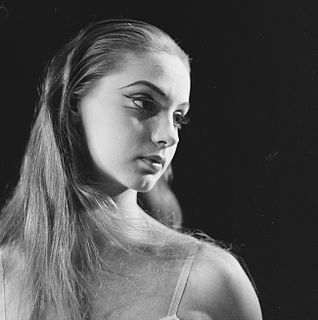
Suzanne Farrell is an American ballerina and the founder of the Suzanne Farrell Ballet at the Kennedy Center in Washington, D.C.
Le Baiser de la fée is a ballet in one act and four scenes composed by Igor Stravinsky in 1928 and revised in 1950 for George Balanchine and the New York City Ballet. Based on Hans Christian Andersen's short story Isjomfruen, the work is an homage to Pyotr Ilyich Tchaikovsky, for the 35th anniversary of the composer's death. Stravinsky elaborated several melodies from early piano pieces and songs by Tchaikovsky in his score. A commission by Ida Rubinstein from 1927, the ballet was choreographed by Bronislava Nijinska and premiered in Paris on 27 November 1928.

Apollo is a neoclassical ballet in two tableaux composed between 1927 and 1928 by Igor Stravinsky. It was choreographed in 1928 by twenty-four-year-old George Balanchine, with the composer contributing the libretto. The scenery and costumes were designed by André Bauchant, with new costumes by Coco Chanel in 1929. The scenery was executed by Alexander Shervashidze, with costumes under the direction of Mme. A. Youkine. The American patron of the arts Elizabeth Sprague Coolidge had commissioned the ballet in 1927 for a festival of contemporary music to be held the following year at the Library of Congress in Washington, D.C.

Miami City Ballet is an American ballet company based in Miami Beach, Florida, led by artistic director Lourdes Lopez. MCB was founded in 1985 by Toby Lerner Ansin, a Miami philanthropist. Ansin and the founding board hired Edward Villella, former New York City Ballet principal dancer to be the founding artistic director.
Tchaikovsky Pas de Deux is a ballet choreographed by George Balanchine to a composition by Pyotr Ilyich Tchaikovsky originally intended for act 3 of Swan Lake. With costumes by Barbara Karinska and lighting by Jack Owen Brown, it was first presented by New York City Ballet at the City Center of Music and Drama, New York, on 29 March 1960. Robert Irving conducted the New York City Ballet Orchestra. The dancers were Violette Verdy and Conrad Ludlow.
The Suzanne Farrell Ballet is a ballet company housed at the Kennedy Center, Washington, D.C., and founded in 2000 by Suzanne Farrell, one of George Balanchine's most celebrated ballerinas, and a former New York City Ballet principal dancer. Until 2017, the Suzanne Farrell Ballet was a full-fledged company produced by the Kennedy Center and had performed there since 1999 in addition to presenting extensive national and international tours. In September 2016, the Center announced that the company would be disbanding at the end of 2017, citing "possibilities of new expansion" and indicating that Farrell would likely return to "full-time teaching."
Serenade is a ballet by George Balanchine to Tchaikovsky's 1880 Serenade for Strings in C, Op. 48. Students of the School of American Ballet gave the first performance on Sunday, 10 June 1934 on the Felix M. Warburg estate in White Plains, N.Y., where Mozartiana had been danced the previous day. This was the first ballet that Balanchine choreographed in America. It was then presented by the Producing Company of the School of American Ballet on 6 December at the Avery Memorial Theatre of the Wadsworth Atheneum with sets by the painter William Littlefield. Balanchine presented the ballet as his response to the generous sponsorships he received during his immigration to America. The official premiere took place on 1 March 1935 with the American Ballet at the Adelphi Theatre, New York, conducted by Sandor Harmati.
Circus Polka: For a Young Elephant was written by Igor Stravinsky in 1942. He composed it for a ballet production that the choreographer George Balanchine did for Ringling Bros. and Barnum & Bailey Circus. The ballet was performed by fifty elephants and fifty ballerinas. In 1944, Stravinsky published an orchestration of the piece, which is now part of the repertoire of many orchestras.
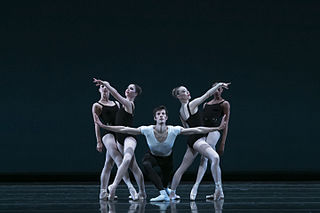
The Four Temperaments is a ballet made by New York City Ballet co-founder and ballet master George Balanchine to music he commissioned from Paul Hindemith for the opening program of Ballet Society, immediate forerunner of City Ballet.
Vienna Waltzes is a ballet made by New York City Ballet co-founder and founding choreographer George Balanchine to music by Johann Strauss, Jr., Franz Lehár, and Richard Strauss:
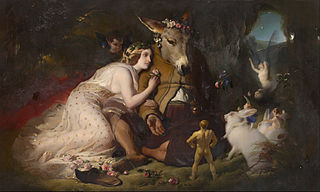
A Midsummer Night's Dream is a two-act ballet choreographed by George Balanchine to Felix Mendelssohn's music to Shakespeare's play of the same name. In addition to the incidental music, Balanchine incorporated other Mendelssohn works into the ballet, including the Overtures to Athalie, Son and Stranger, and The Fair Melusine, the "String Symphony No. 9 in C minor" and The First Walpurgis Night. A Midsummer Night's Dream, Balanchine's first completely original full-length ballet, premiered at New York City Ballet on 17 January 1962, with Edward Villella in the role of Oberon, Melissa Hayden in the role of Titania, and Arthur Mitchell in the role of Puck. They were joined by Francisco Moncion in the role of Theseus- Duke of Athens. The ballet employs a large children's corps de ballet. Act I tells Shakespeare's familiar story of lovers and fairies while Act II presents a strictly classical dance wedding celebration. The ballet dispenses with Shakespeare's play-within-a-play finale. A Midsummer Night's Dream opened The New York City Ballet's first season at the New York State Theater in April, 1964.
Who Cares? is a ballet made by New York City Ballet's co-founder and founding choreographer George Balanchine to songs by George Gershwin in an orchestration by Hershy Kay. The premiere took place on Saturday, February 7, 1970, at the New York State Theater, Lincoln Center with costumes by Barbara Karinska and lighting by Ronald Bates; it was at first performed without décor but from November 1970 with scenery by Jo Mielziner.
Choreographer George Balanchine's production of Tchaikovsky's ballet The Nutcracker has become the most famous stage production of the ballet performed in the U.S. It uses the plot of the Alexandre Dumas, père, version of E.T.A. Hoffmann's tale, The Nutcracker and the Mouse King (1816). Its premiere took place on February 2, 1954, at City Center, New York, with costumes by Karinska and sets by Horace Armistead. It has been staged in New York every year since 1954, and many other productions throughout the United States either imitate it, or directly use the Balanchine staging. However, although it is often cited as being the production that made the ballet famous in the U.S., it was Willam Christensen's 1944 production for the San Francisco Ballet which first introduced the complete work to the United States.
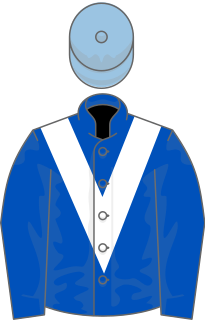
Balanchine is a retired Thoroughbred racehorse, bred in the United States and trained in the United Kingdom and Dubai. In a racing career which lasted from September 1993 until October 1995 she ran eight times and won four races. After winning both her races a two-year-old Balanchine was narrowly beaten in the 1994 1000 Guineas before winning the Classic Epsom Oaks. She then recorded her most important success when defeating male opposition in the 1994 Irish Derby. After recovering from a life-threatening illness, she returned in 1995 but failed to win. Balanchine was one of the first important successes for Godolphin Racing.

Balanchine is a crater on the planet Mercury. It possesses a ray system of slightly bluish rays. These rays inspired the name of the crater due to their similarity to the tutu in George Balanchine's Serenade.
Balanchine technique or Balanchine method is the ballet performance style invented by dancer, choreographer, and teacher George Balanchine (1904–1983), and a trademark of the George Balanchine Foundation. It is used widely today in many of Balanchine's choreographic works. It is employed by ballet companies and taught in schools throughout North America, including the New York City Ballet and School of American Ballet, where it first emerged.